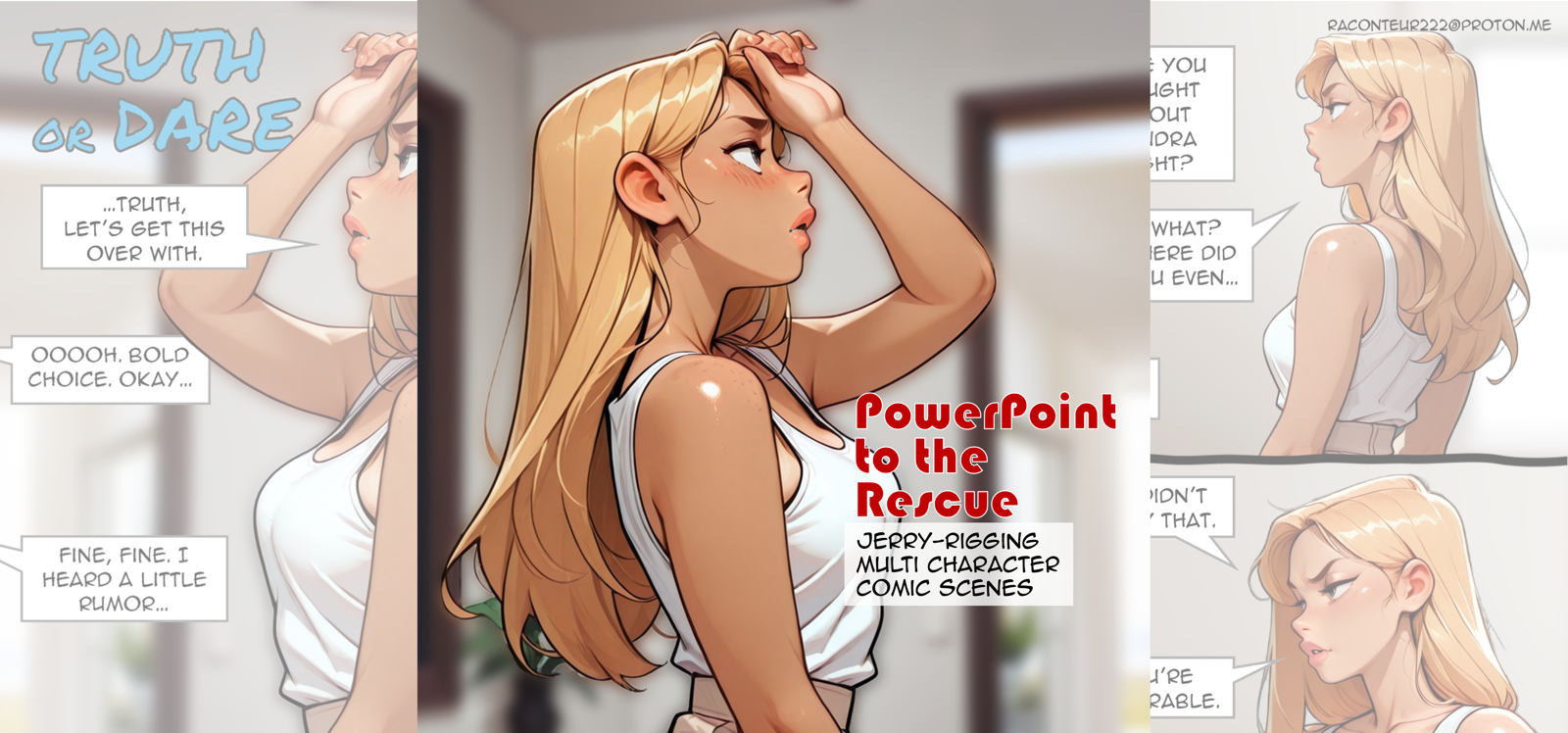Dear readers,
My recent posts have managed to land me in the top 20 creators on the CIVITAI Leaderboard for Writers. Your views, reactions and bookmarks have made it possible and I wanted to say 'THANK YOU'.
I hope you've been enjoying the content I have been publishing. It does take time and effort to produce each of these posts. If you're enjoying my content please consider Bookmarking the article and giving a 👍 or a ❤️ reaction since they all help with the Leaderboard ranking. It provides me with the motivation to keep this going. Thanks!
To try and keep the post shorter I may not be doing an exhaustive screen capture for every step I make. If you check out my earlier articles, you'll find outlined a number of the PowerPoint features I'll be using.
You'll find the NSFW posts of the final image Truth or Dare article here and the post with some of the source images I both used and didn't use here.
The Musing
I like to imagine creators can be broken into two categories perfectionists and speedsters. While there are some that have mastered the ability to churn out stunning high quality images at breakneck speed, I usually imagine that the rest of creators opt for one path over the other.
When I've given advice to people interested investing time and resources into developing a creative skill I've often told them that in order to become a 'good artist' you have to start off as a 'bad artist'. Only a population of creators spend a lot of time to produce content they feel is crap and embrace the suck until they start to develop pride in their work.
In my opinion, that's the time to decide if your core focus is to become a perfectionist (i.e. quality) or a speedster (i.e. quantity). The best way I can describe it is it's the difference between a classically trained painter and a comic strip artist. One might focus on just a few flawless projects, while the other creates content that's intended to be more immediate and disposable.
I classify myself as a speedster due to the fact that I learn the best through repetition. So while I still try my best to create good content, I often err on the side of get it done and move on to the next project. There is a point where you start having diminishing returns and spending another hour on a project might only raise the quality by a few percentage points.
I bring this all up because when I write these guides I usually take it from the perspective of getting things done quickly while other people might feel there are better ways to complete a creative project. Figure out what type of creator you are, and take pride in how you approach your art.
The Issue
Earlier I posted my third full length comic. I'll admit that it wasn't a complex story, but the main thing is I found myself generating images and they came together in my head. So my process is usually something like this...
I make a batch of images and either a story pops up for a single image or I see how a story can develop by linking several images together.
I stop generating images and I start thinking about what the story is, who are the people, is it going to be funny, sexy, dark.
I usually turn to AI and collaborate with our future overlords to help me come up with the beats, the character descriptions, dialogue samples.
I then turn back to generating images and start making churning out a higher volume of images so I have a lot of content to work with.
I start moving into production where I'm laying out images, writing dialogue, and generating images.
There comes a point that I realize that the end product is 'good enough' because if there is one thing I don't do well with is having a lot of half finished creative projects.
PRO TIP: If at any point in the process I try to determine how much effort is it requiring me to move from one step to the next. I've given myself permission to kill a project early on if it's just not working which is better than dragging something across the finish line out of a false sense of commitment
My core issue when I do a comic is do I try to generate the perfect image with two characters interacting, or do I manufacture the scene in post production. The main issue when you're doing something with two distinctly different characters, with different outfits, hair styles, and appearances is that the AI loves giving you everything you're not asking for and none of what you needed.
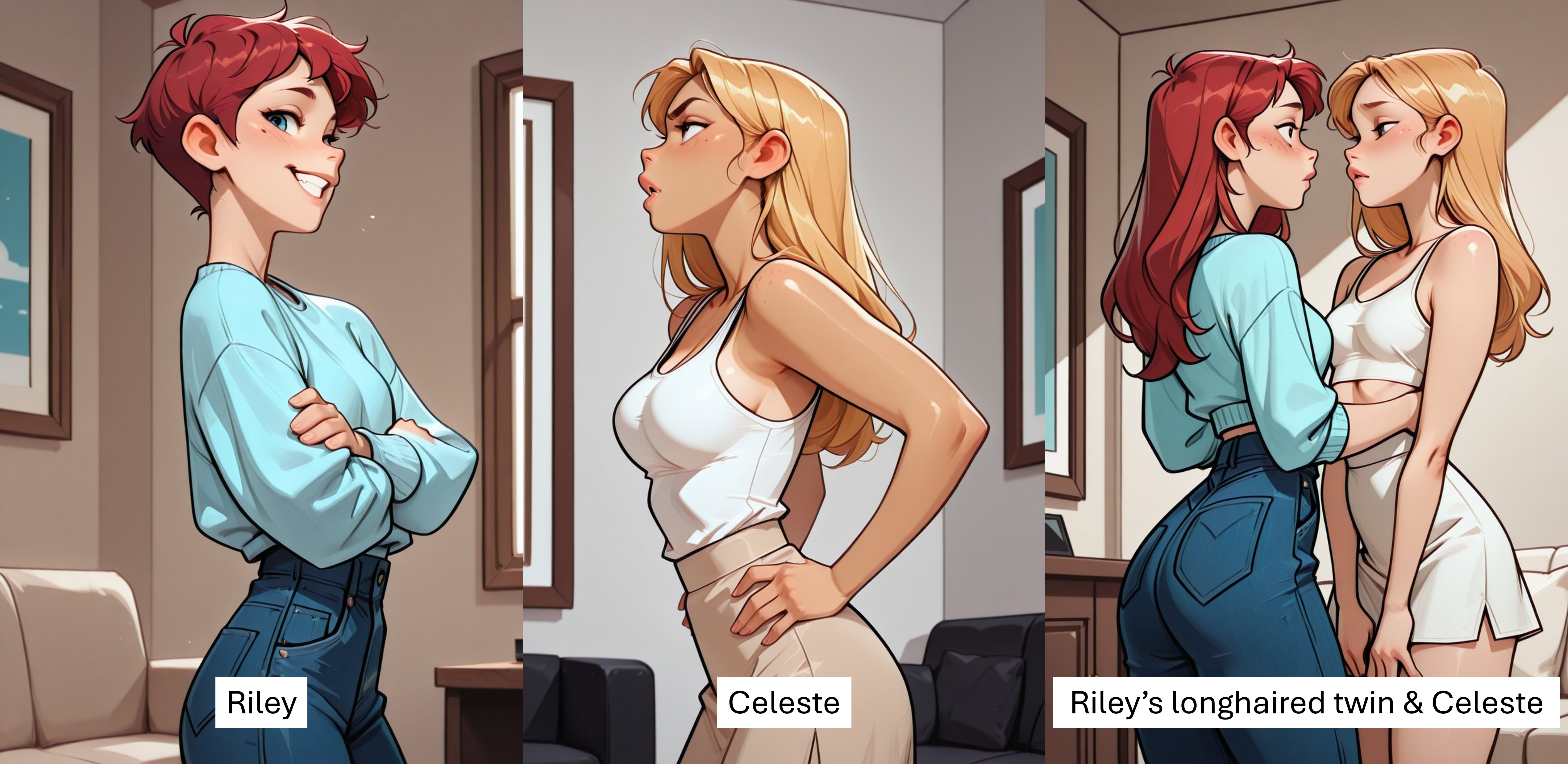
When I decide to create an 8-12 page comic it takes a lot of buzz because I end up playing the image lottery and I need just the right image because you don't want your characters looking different from one frame to the next. Additionally, the AI loves putting windows, pictures, couches, beds and all sorts of 'flair' into the back ground that adds yet another layer of complexity.
The Action
So when I need to characters to talk to one another, and they're not in physical contact with one another I generate a lot of images with them in the pose I need them in, with the expression I'm looking for and ideally from different angles.
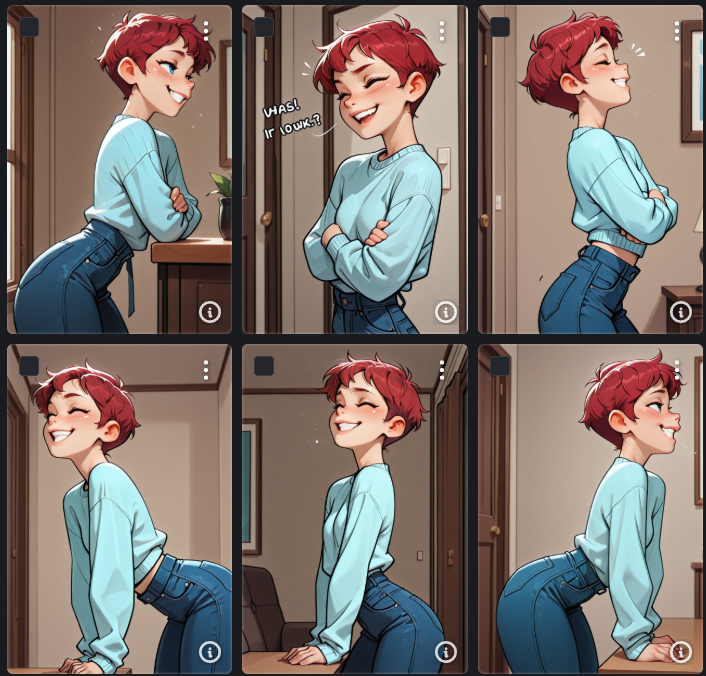
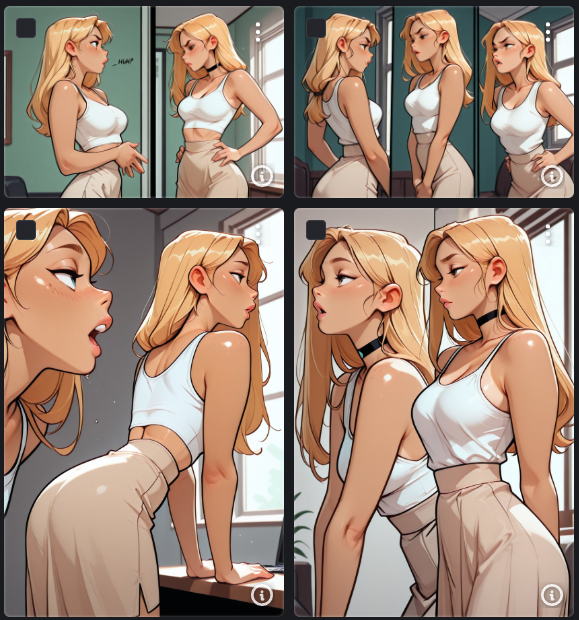
This is usually when I'll start tweaking my prompt. Regardless, for whatever reason I could not get Riley to stop generating in profile and face the viewer while Celeste kept generating with a choker no matter what I did. The main thing is I'm not looking for the perfect image but a collection of images I can leverage in post production.
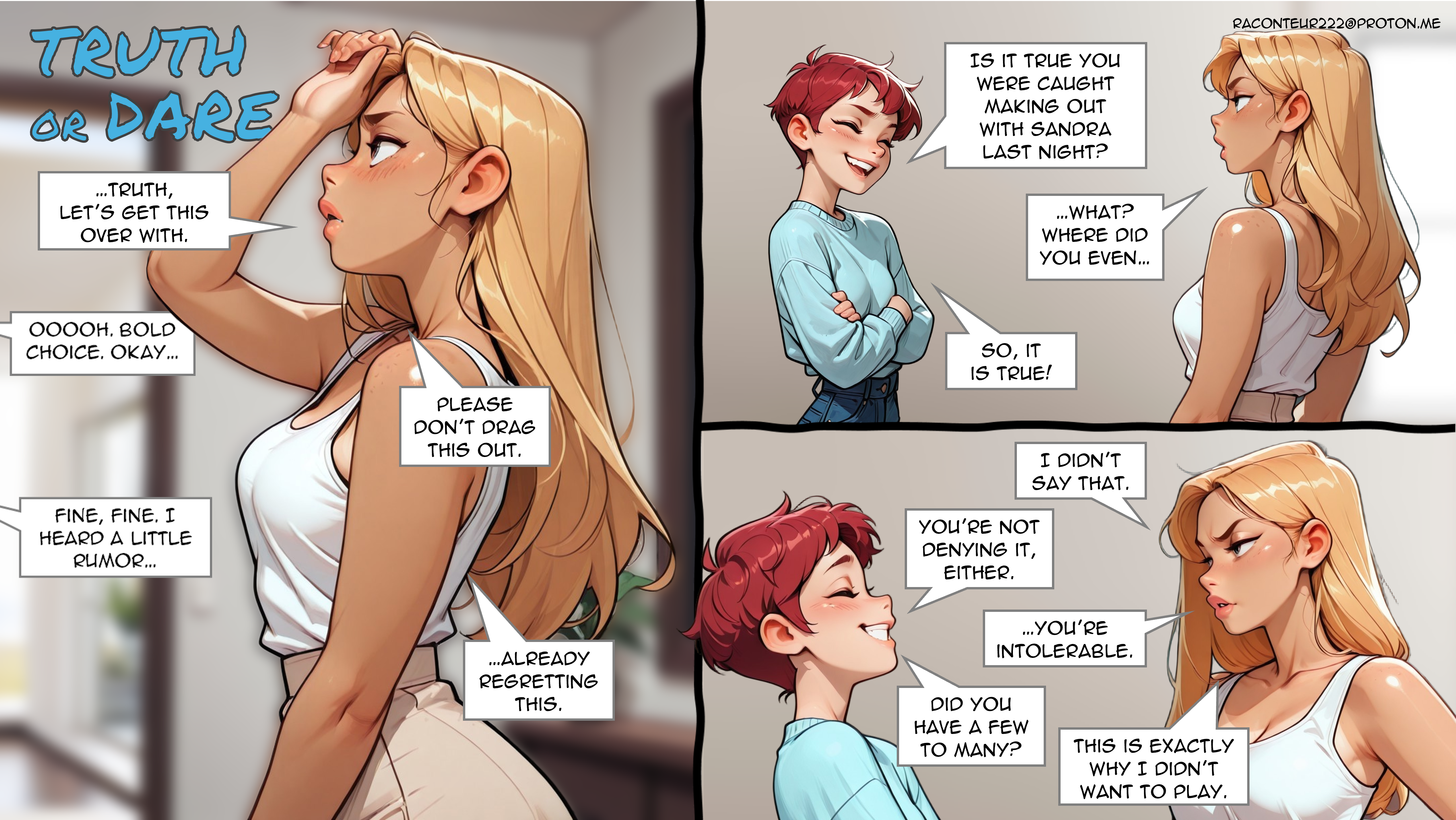
For the second page of my comic I pulled four images.
An image of Celeste appearing frustrated
A multiview image of Celeste that included a two faced beast that would normally result in the image being deleted
An image or Riley laughing
An image of Riley looking smug
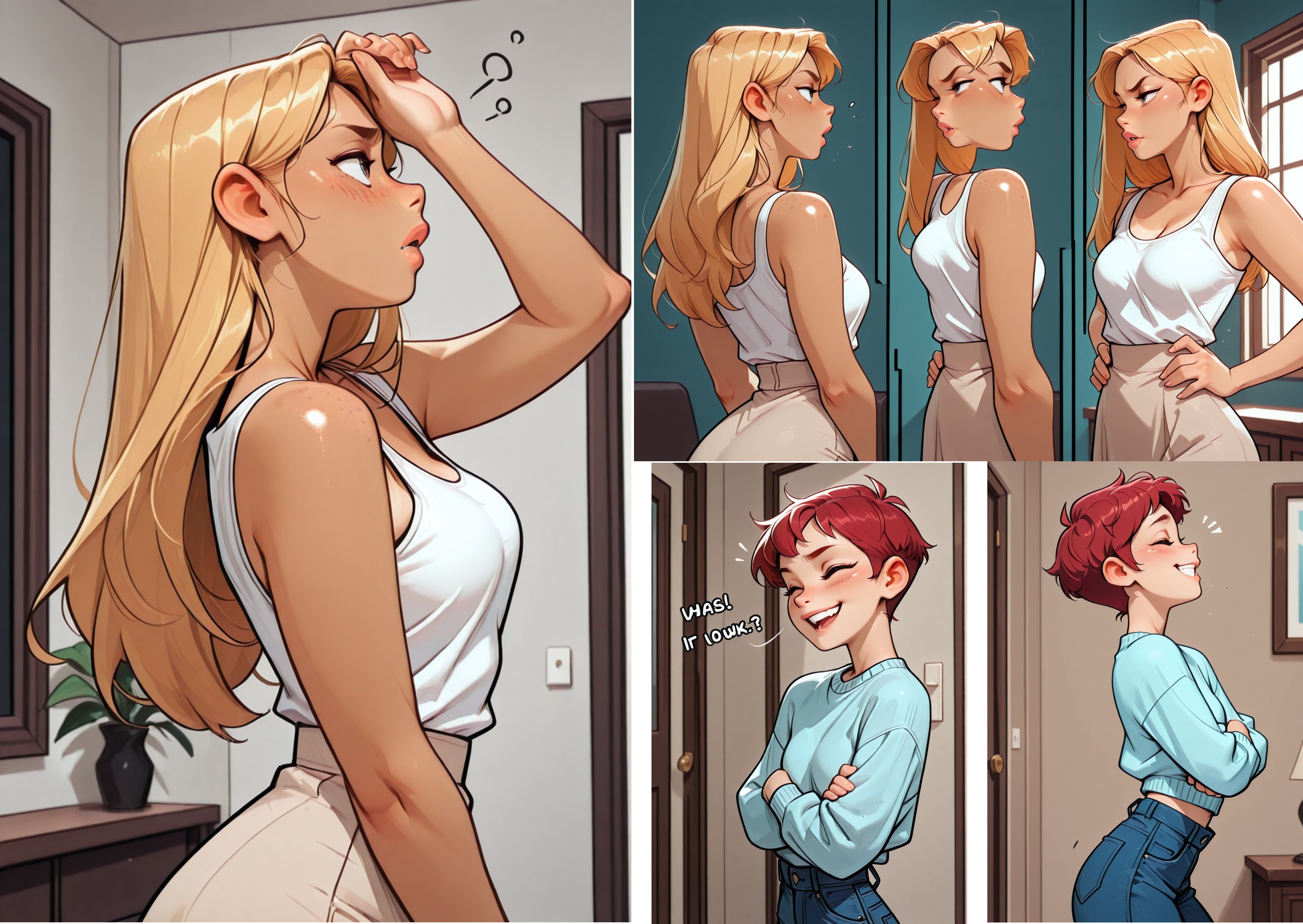
The main issues are that Image #1 is portrait and I need it landscape and none of the backgrounds in the images match one another.
Image Edits
FYI: All of my image edits were done using OpenArt (inpainting, outpainting, extending) or PowerPoint (croping, recoloring, artistic effects)
Image #01
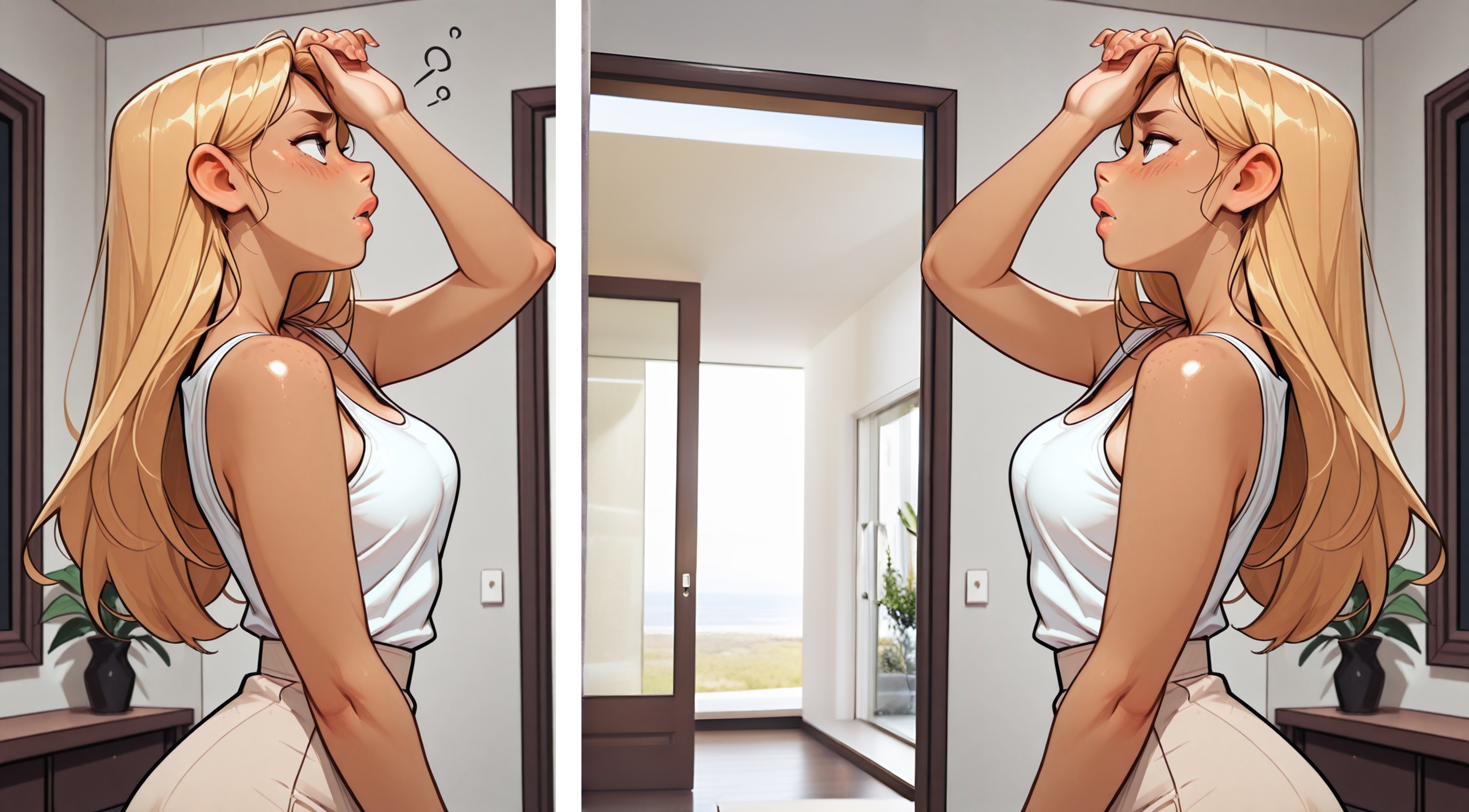
I take the image and remove the flourishes near her wrist while flipping Celeste to face the opposite direction. I then Expand the image and finally settle on an image that looks reasonable.
Images #02-#04
For these three images I simply removed their backgrounds
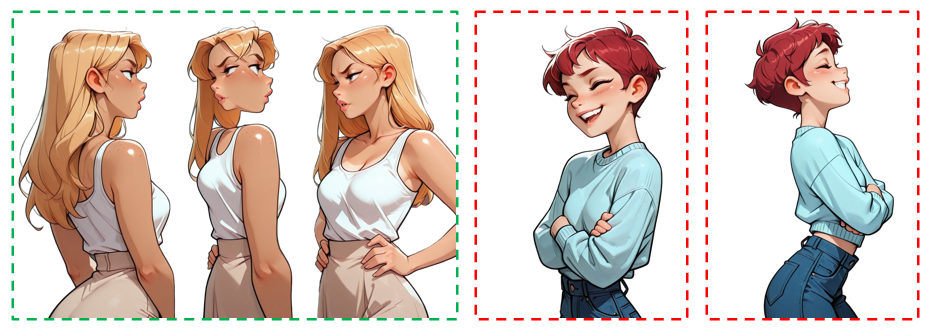
Comic Page 2 Part A
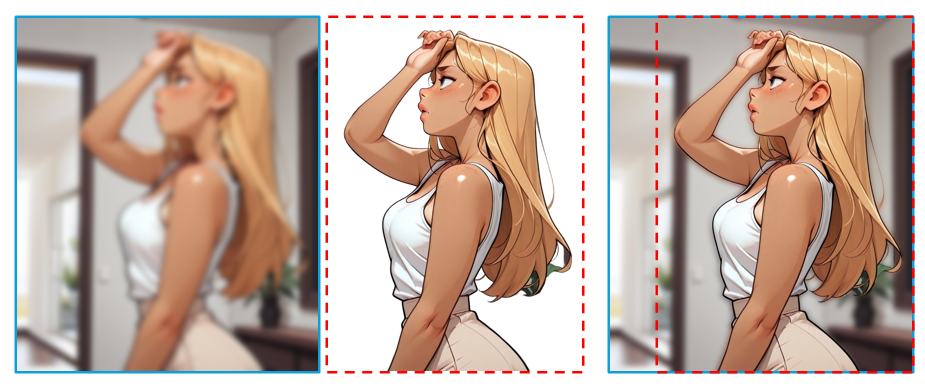
For the final image I wanted a Bohek effect with the background blurry. So I dropped in the extended image (blue outline) and cropped it to the area I was looking to fill on the page before applying the Blur image effect. Next I took the same image and removed the background (red dashed outline) and I place the image with the removed background on top of the blurred image getting the final effect I was looking for.
Comic Page 2 Part B

For the next part of the comic I knew I wanted to have a background that looked believably similar to Part A while providing some texture to the background. I found a generic 'living room background' image online that fit the bill. I then blurred it and cropped it to the dimensions I needed (blue outline). I then positioned Riley (red dashed outline) and Celeste (green dashed outline) after cropping out the unneeded portion of the image. I then adjusted the perspective slightly so that Riley looked further back in the scene.
Comic Page 2 Part C
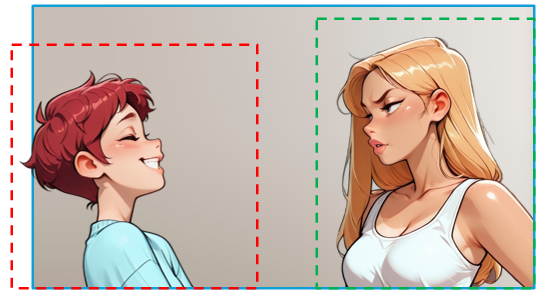
Same recipe as Part B. The blurred background image, the cropped image of Riley, and the cropped image of Celeste all adjusted and spaced so that ideally no one would ever know these were three separate images.
Comic Page 2
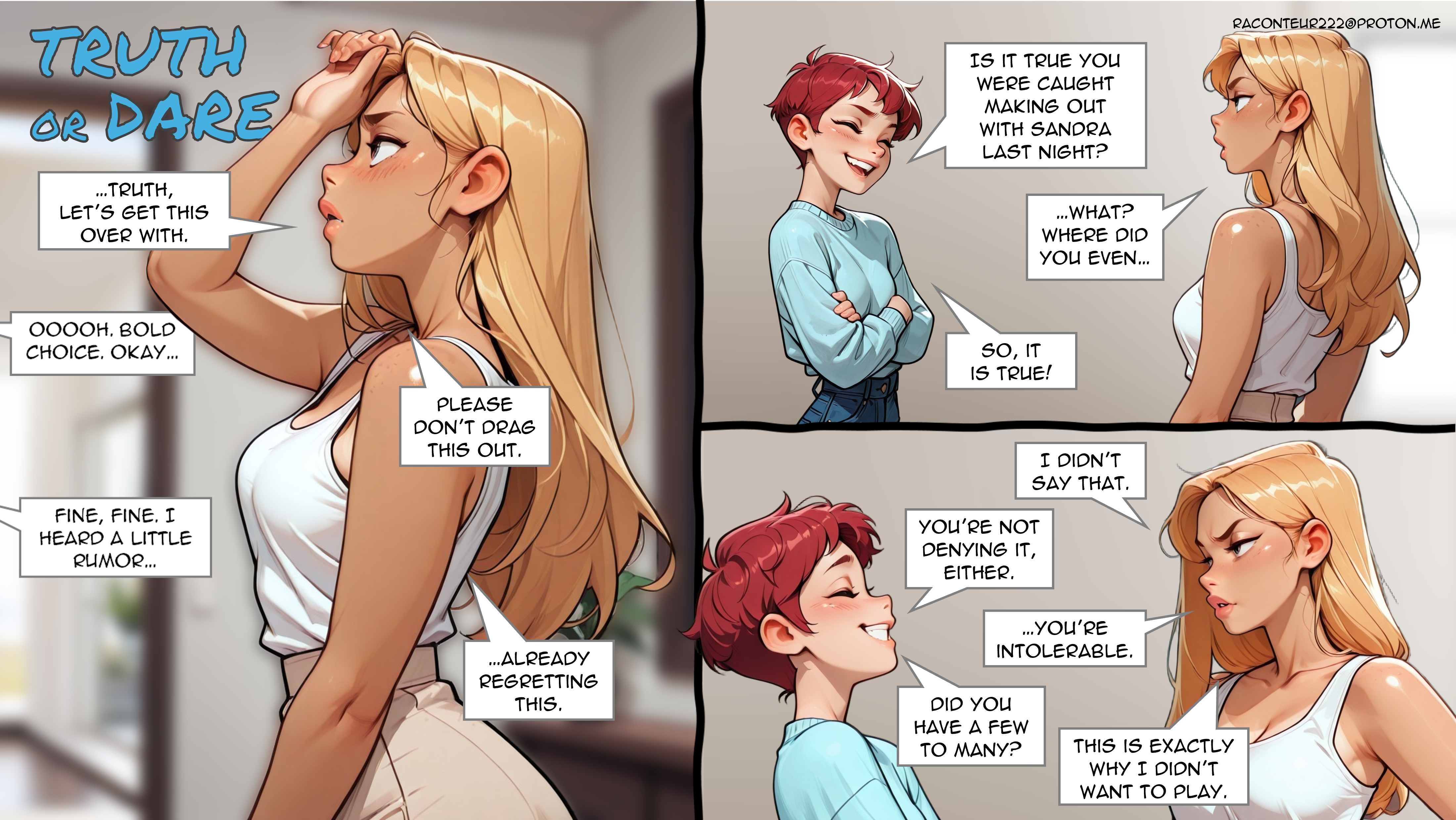
Once the page has been completed, then it's a matter of adding divider lines, speech bubbles and making final tweaks to the text. In the end I only needed a couple images to finish the page, but I would have likely generated up to 5x as many images hoping to get the perfect images I needed.
Chicken or the Egg
I can't speak about other creators, but when it comes to doing a page like this some folks want to know if you generate the text first and then the images or the images first and then the text. More often then not, I will start with a blank page and some initial dialogue I want to make sure I get through in the space I have. This helps me try and understand how best to lay everything out.
Looking over the dialogue I go back to all the images I've created and I start thinking about the positions I need, the expressions, and I start flipping through. Usually, I'll find some or all of the images required. Other times I find one or two that are a good start and then I have to try and generate the ones still missing.
Once I start building out the layout I usually build one part at a time and then add the text. That way I know that everything looks good in Part A before starting on Part B and so on. If you do find things are simply not working out or not looking good. I will usually duplicate the page I'm working on to preserve my original work and then start on an alternative.
If something just doesn't feel right or bugs you about the page, see what you can do to fix it.
The Impact
While Truth or Dare [NSFW] was not a dialogue dense comic I was trying to see how quickly I could produce it. My first comic took me weeks and as a speedster I can't bring myself to spend that much time going forward. From start to finish I managed to complete the entire project in about 6 hours spread across two working sessions. That counts all the image generation, story development, final layout, and then posting.
Are there things that could have been improved? Of course! But sometimes the best thing is being able to tell when your content is 'good enough'.
Conclusion
I hope that you find these articles helpful and if anything is unclear or you have any questions please feel free to post them in the comments or DM me.

